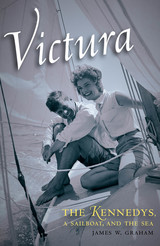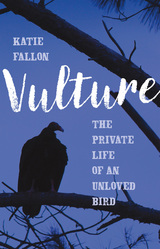247 scholarly books by University Press of New England and 3
start with V
247 scholarly books by University Press of New England and 3
247 scholarly books by University Press of New England
3 start with V start with V
3 start with V start with V

Victura
The Kennedys, a Sailboat, and the Sea
James W. Graham
University Press of New England, 2015
To truly understand the dynamics and magic of the Kennedy family, one must understand their passion for sailing and the sea. Many families sail together, but the Kennedys’ relationship with Victura, the 25-foot sloop purchased in 1932, stands apart. Throughout their brief lives, Joe Jr., Jack, and Bobby spent many hours racing Victura. Lack of effort in a race by one of his sons could infuriate Joseph P. Kennedy, and Joe Jr. and Jack ranked among the best collegiate sailors in New England. Likewise, Eunice emerged as a gifted sailor and fierce competitor, the equal of any of her brothers. The Kennedys believed that Jack’s experience sailing Victura helped him survive the sinking of his PT boat during World War II. In the 1950s, glossy Life magazine photos of Jack and Jackie on Victura’s bow helped define the winning Kennedy brand. Jack doodled sketches of Victura during Oval Office meetings, and it’s probable that his love of seafaring played a role in his 1961 decision to put a man on the moon, an enterprise he referred to as “spacefaring.” Ted loved Victura as much as any of his siblings did and, with his own children and the children of his lost brothers as crew, he sailed into his old age: past the shoals of an ebbing career, and into his eventual role as the “Lion of the Senate.” In Victura, James W. Graham charts the progress of America’s signature twentieth-century family dynasty in a narrative both stunningly original and deeply gripping. This true tale of one small sailboat is an invaluable contribution to our understanding of the great story of the Kennedys.
[more]

The Voice of the Dawn
An Autohistory of the Abenaki Nation
Frederick Matthew Wiseman
University Press of New England, 2001
"[My] story is a sash woven of many strands of language. The first strand is the remembered wisdom of the Abenaki community. The second strand is our history and that of our relatives, written down by European, Native American, and Euroamerican observers. The third strand is what our Mother the Earth has revealed to us through the studies and writings of those who delve in her, the archaeologists and paleoecologists. The fourth strand is my own family history and its stories. The fifth strand is, of course, that which has come to me alone, stories which I create with my own beliefs and visions." So begins the first book about Abenaki history and culture written from the inside. Frederick Matthew Wiseman's extensive research and personal engagement breathe life into Voice of the Dawn, making it truly unique. Colin Calloway, Chair of Native American Studies at Dartmouth College, writes, "Going beyond all previous works on the Abenakis, Wiseman draws on family and community knowledge in a way that none of those authors could, speaks from an avowedly Abenaki perspective, and addresses aspects and issues ignored in other works. Moreover, no one that I know of has done as much work in locating and regathering items of Western Abenaki material culture. The quality and quantity of illustrations alone make this an attractive book, as well as a valuable visual record of change and persistence over time. As someone personally and pivotally involved in the Abenaki renaissance, Wiseman brings the story up to date without closing it."
[more]

Vulture
The Private Life of an Unloved Bird
Katie Fallon
University Press of New England, 2018
Turkey vultures, the most widely distributed and abundant scavenging birds of prey on the planet, are found from central Canada to the southern tip of Argentina, and nearly everywhere in between. In the United States we sometimes call them buzzards; in parts of Mexico the name is aura cabecirroja, in Uruguay jote cabeza colorada, and in Ecuador gallinazo aura. A huge bird, the turkey vulture is a familiar sight from culture to culture, in both hemispheres. But despite being ubiquitous and recognizable, the turkey vulture has never had a book of literary nonfiction devoted to it—until Vulture. Floating on six-foot wings, turkey vultures use their keen senses of smell and sight to locate carrion. Unlike their cousin the black vulture, turkey vultures do not kill weak or dying animals; instead, they cleanse, purify, and renew the environment by clearing it of decaying carcasses, thus slowing the spread of such dangerous pathogens as anthrax, rabies, and botulism. The beauty, grace, and important role of these birds in the ecosystem notwithstanding, turkey vultures are maligned and underappreciated; they have been accused of spreading disease and killing livestock, neither of which has ever been substantiated. Although turkey vultures are protected under the Migratory Bird Treaty Act, which makes harming them a federal offense, the birds still face persecution. They’ve been killed because of their looks, their odor, and their presence in proximity to humans. Even the federal government occasionally sanctions “roost dispersals,” which involve the harassment and sometimes the murder of communally roosting vultures during the cold winter months. Vulture follows a year in the life of a typical North American turkey vulture. By incorporating information from scientific papers and articles, as well as interviews with world-renowned raptor and vulture experts, author Katie Fallon examines all aspects of the bird’s natural history: breeding, incubating eggs, raising chicks, migrating, and roosting. After reading this book you will never look at a vulture in the same way again.
[more]
READERS
Browse our collection.
PUBLISHERS
See BiblioVault's publisher services.
STUDENT SERVICES
Files for college accessibility offices.
UChicago Accessibility Resources
home | accessibility | search | about | contact us
BiblioVault ® 2001 - 2024
The University of Chicago Press









